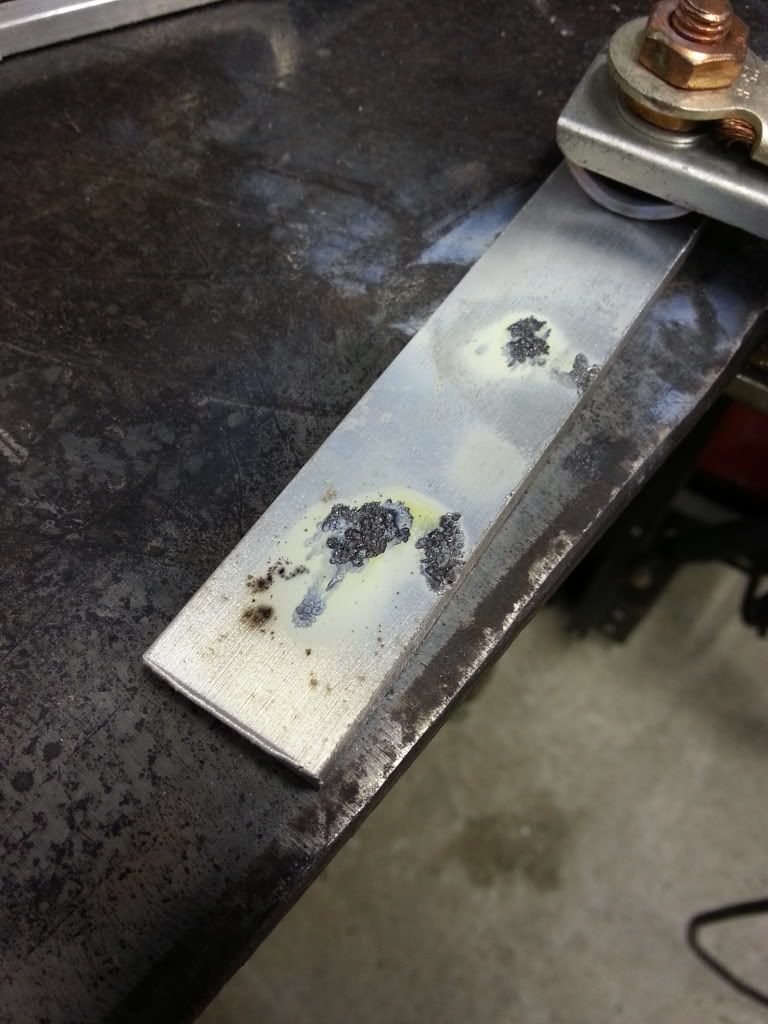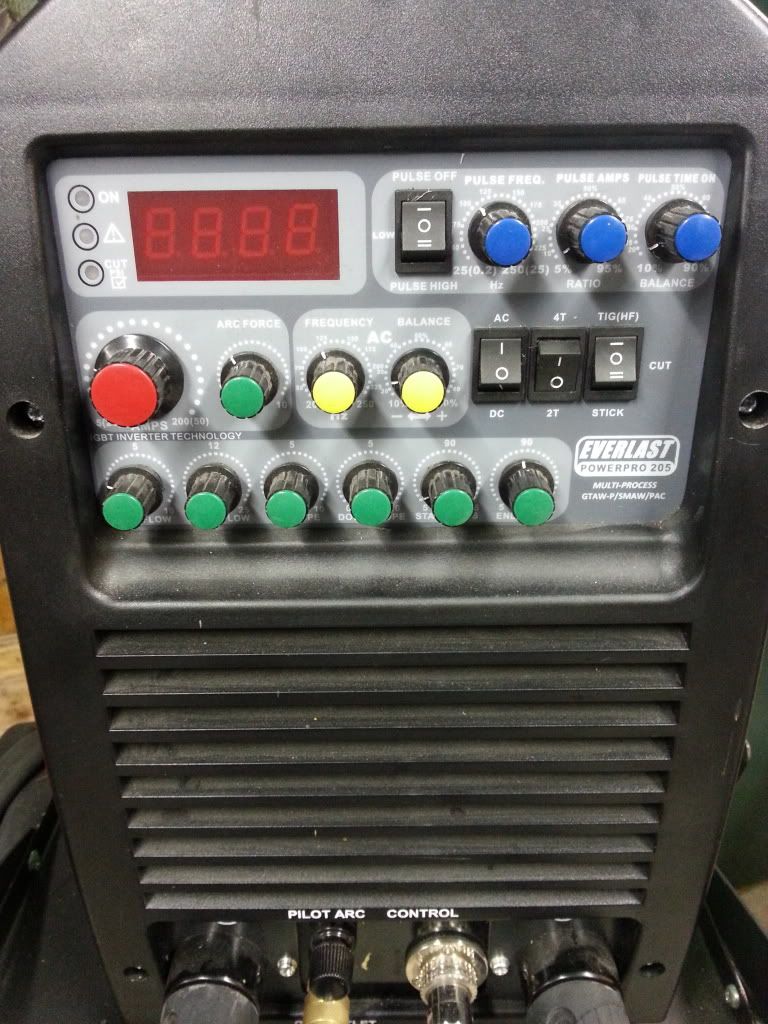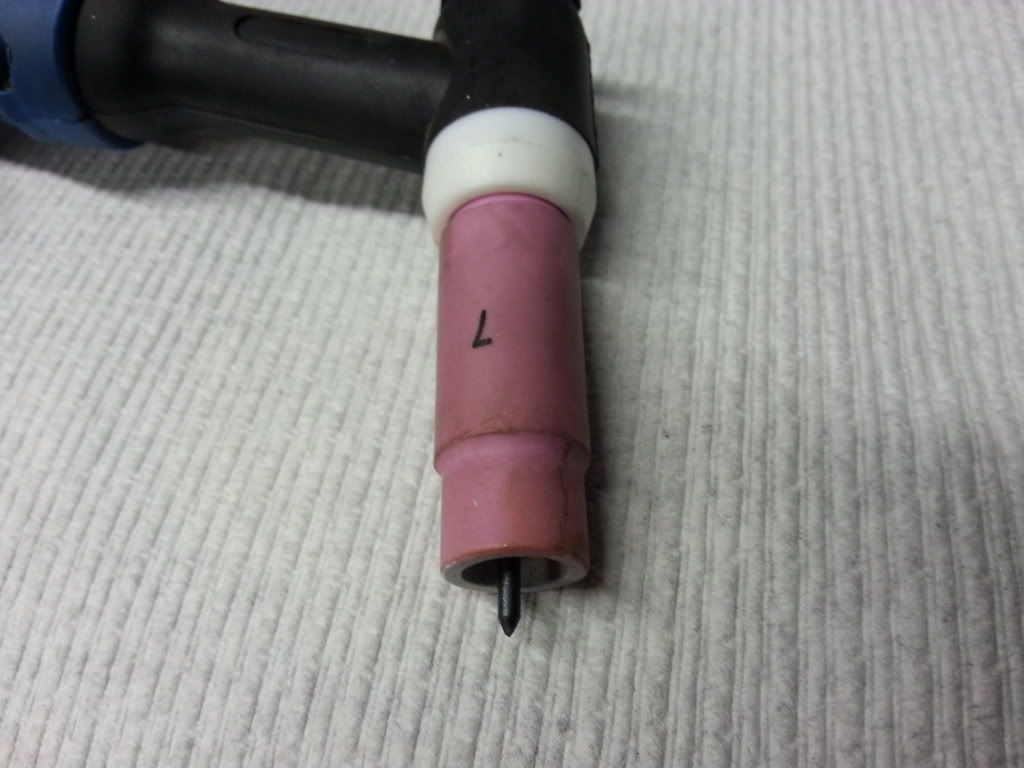Bought this welder in 2011, and started learning to TIG weld aluminum. I had some success, and was slowly improving. Last year the machine didn't get used for TIG at all. This year I got a replacement bottle of identical gas (ALTIG which is an argon with a small % of helium mix), and was about to weld 2 pieces together when I decided to do a small practice run. Good thing I did! As SOON as the arc started, its instantly contaminated. The aluminum melts and turns black and pitted, and never turns into a shiny pool/puddle like it used to, and the arc jumps wildly all over the place. I've spent hours pouring over everything I could think of. Gas flow rate, AC balance/frequency, amperage, different aluminum pieces from the scrap bin. I've meticulously cleaned them all using a clean stainless brush and/or acetone. The only thing left I can think of is bad or impure gas. Any thoughts?
This is what happens immediately when I start an arc. Its hard to see, but the surrounding area is always covered with a yellow, dusty film almost like sulphur.

As you can see, my AC balance is somewhere around 30%, and frequency is usually between 100-125. I've played with both of these a lot to no avail.

This is what my tip looks like after striking those 2 arcs in the first picture.

Finally, here's the part I want to weld! A new battery holder for my motorcycle.

And advice would be greatly appreciated. I've searched for a long time, and haven't found any satisfactory answers via google.
Thanks
Jon


